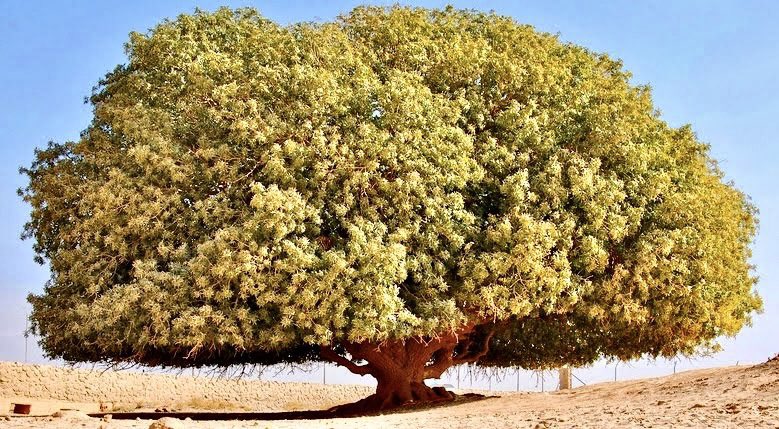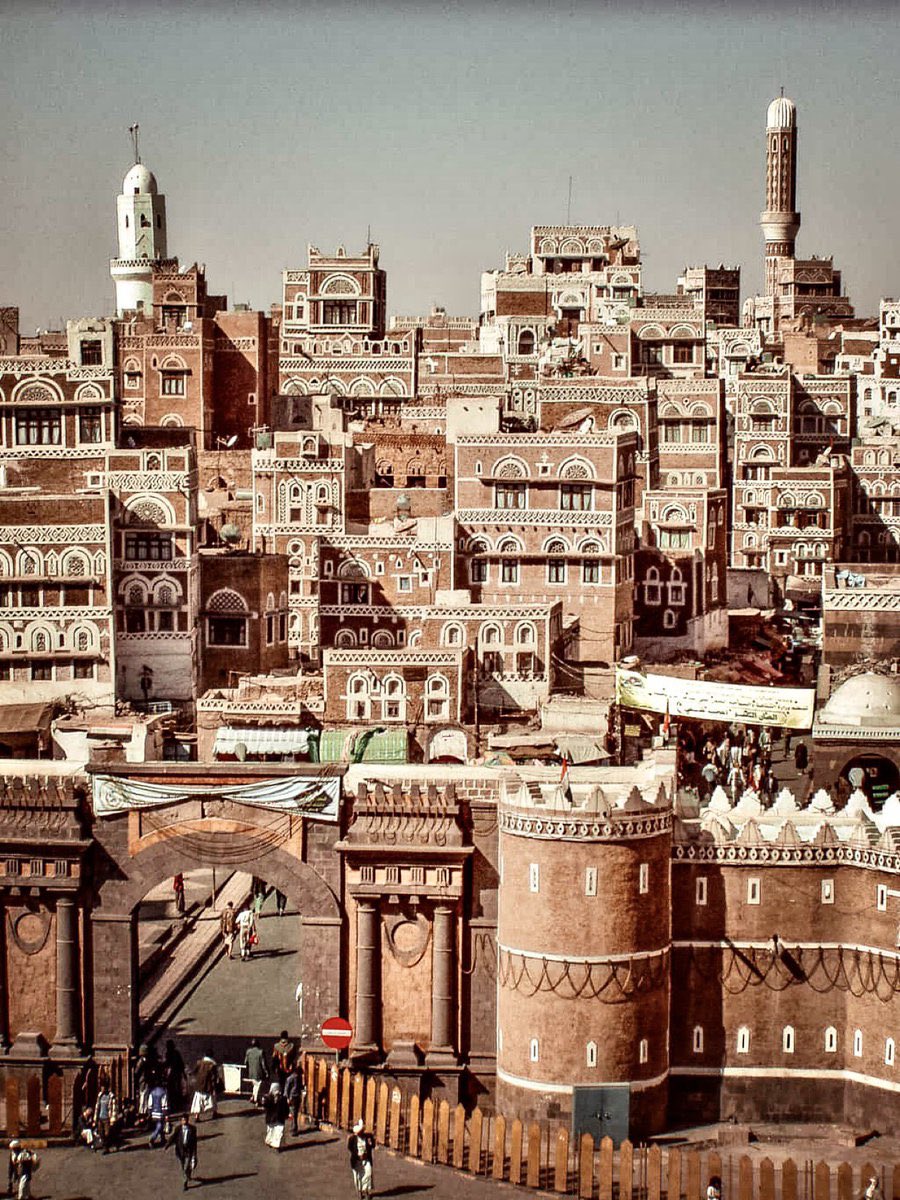Over 1400 years ago Prophet Muhammad ﷺ and a Christian Monk named Bahira, met under the shade of a tree. That same tree was believed discovered still alive in the northern deserts of Jordan. The only tree alive in hundreds of miles of emptiness.
A thread on the Blessed Tree…
A thread on the Blessed Tree…

1/ Al Buqayawiyya tree means the blessed tree. This tree is believed by many to have provided shelter to Prophet Muhammad (PBUH) 1400 years ago. Many people call it the only living Sahabi tree. 

2/ A Sahabi is someone who saw or met Prophet Muhammad (PBUH) and believed in him. The Blessed Tree is believed by many to be the last living witness of Prophet Muhammad (PBUH) on earth 

3/ In Islam, the events of the life of Prophet Muhammad (PBUH) serve as a moral guide for people. They are collected in the Hadith & in the Seerah which tells his life story. One episode in the Seerah tells of the meeting of the Prophet as a young boy & the Christian Monk Bahirah 

4/ The Blessed Tree is an Atlantic Pistachio tree. It is located in the northern deserts of Jordan, on the old trade route between Mecca and Damascus. Caravans used to travel by this route. 

5/ Prophet Muhammad (PBUH) was a young boy of age 9 or 11 when he was traveling by caravan, with his Uncle Abu Talib towards Syria for trade. 

6/ When Bahira, a Christian Monk who was retired in solitude in a cell nearby, saw the caravan arriving, he was astounded to realise that a little cloud was moving over the heads of some of the travellers in the caravan, protecting them from the scorching sun. 

7/ He was also very surprised to see the branches of the tree sink down to the caravan that sat down under it to have a rest 

8/ Bahira had read an old manuscript in which the arrival of a new Prophet was announced & he had the clear intuition that he would meet him during his lifetime. He believed those little miracles were confirming that the arrival of the Prophet was coming soon
Monastery of Bahira
Monastery of Bahira

9/ As Bahirah watched the caravan of Arabian merchants from Makkah passing by, he observed a young boy being shaded by clouds wherever he went. He at once understood significance of the boy and invited the caravan for a banquet. 

10/ All members of the caravan attended the feast except the boy whom he was anxiously waiting for. The boy was sat looking after the animals. 

11/ Bahirah could find no signs of prophethood in anyone at the banquet, so he urged the caravan members to bring the boy. He quizzed the boy and concluded that according to scripture, he is the Last Messenger 

12/ Bahirah asked Abu Taleb about his relation to the boy. Abu Taleb replied “He is my son.” The monk responded “The father of this boy cannot be alive.” Surprised by the monk’s response Abu Taleb explained “He is my nephew. His father died while his mother was pregnant with him”… https://t.co/Fqu7vfl0bxtwitter.com/i/web/status/1…


13/ It was under the shade of the this tree, the Monk Bahira foretold about the prophethood of Muhammad (PBUH). The Blessed Tree in Jordan is a place of pilgrimage, with many Muslims visiting the tree every year 

14/ The symbolism of shade in Islam relates to mercy & protection. A common thread running through the symbolism of trees is that they represent a link between the physical world & the spiritual. The tree has a vertical trunk rooted in the earth & the branches reflect the cosmos 

15/ Fourteen hundred years later, this same tree was discovered alive in the northern deserts of Jordan. An archaeological and historical detective story, pieced together by the Jordanian Prince Ghazi bin Muhammad, led to this incredible rediscovery 

16/ While the Prince was working in the Jordanian royal archives, one of the researchers came across a series of papers which were the records of his great grandfather King Abdallah I, containing a survey that had been carried out of all the holy sites in Jordan. 

17/ This document had been completely lost. Prince Ghazi was already a member of the royal committee for the preservation of the holy sites, and took this survey to his uncle. In this survey he found mention of the tree under which the Prophet Muhammad ﷺ had sat as a boy. 

18/ The Blessed Tree still grows firmly in the middle of the vicious desert of Jordan. After observations, it was believed by many true that the old tree is mentioned in the Bahira monks' records. 

19/ Describing the first time he saw the tree, flying over the desert, His Majesty King Abdallah II of Jordan said “In all this desert I look down & see a tree, absolutely alone, no other trees, no fields, no water. You think it’s a miracle any living thing could survive here.” 

20/ The Blessed Tree is now under the custody and care of the Jordanian government. It is protected by a fence yet it is open to the public. Anyone can enjoy the shelter of the lively tree
To discover more watch this great documentary on The Blessed Tree: https://t.co/UqY6f6N7Nhdailymotion.com/video/x1yw6t2

To discover more watch this great documentary on The Blessed Tree: https://t.co/UqY6f6N7Nhdailymotion.com/video/x1yw6t2

20/ ‘Seest thou not how God citeth a symbol? A good word is as a good tree, its roots set firm and its branches in Heaven. Giving its fruit at every season by the leave of its Lord. God citeth symbols for men that they may remember.’
Qur’an XIV: 24-25
Qur’an XIV: 24-25

Want to explore archaeology & heritage through the art of the city?
Join us for a fascinating and unique online event, "The City as Art: Islamic Archaeology & Heritage” where we bring together a panel of distinguished experts in Islamic archaeology and heritage from across the… https://t.co/tz2KuuedVatwitter.com/i/web/status/1…

Join us for a fascinating and unique online event, "The City as Art: Islamic Archaeology & Heritage” where we bring together a panel of distinguished experts in Islamic archaeology and heritage from across the… https://t.co/tz2KuuedVatwitter.com/i/web/status/1…

• • •
Missing some Tweet in this thread? You can try to
force a refresh

 Read on Twitter
Read on Twitter





















